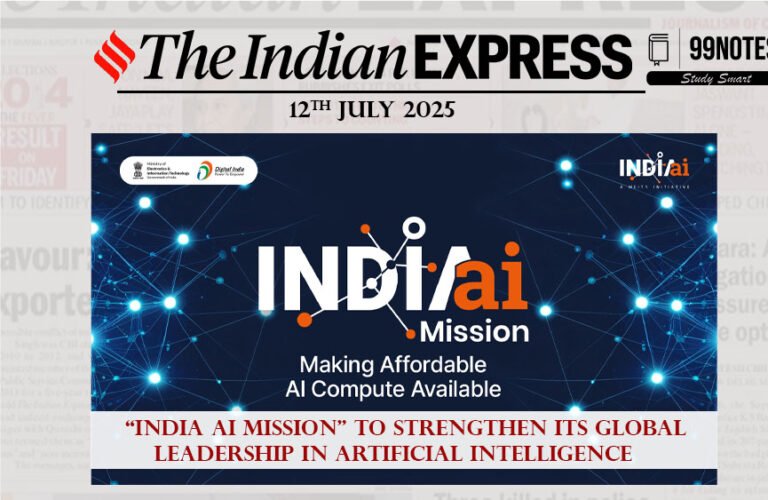03 January 2025 : The Hindu Editorial Analysis
1. Reflections as the world grows more ‘polarised’
(Source – The Hindu, International Edition – Page No. – 8)
|
Topic: GS2 – Social Justice |
|
Context |
|
Definition and Rise of Polarization
- Polarization is defined as a sharp division into opposing extremes, where opinions and beliefs become concentrated rather than existing along a continuum.
- In 2024, “polarization” was selected as the word of the year by Merriam-Webster, reflecting its increasing relevance in political, cultural, and societal contexts.
- The term has permeated various aspects of modern life, from U.S. elections to workplace dynamics, and even celebrity controversies, such as Taylor Swift’s private jet use.
Polarization in U.S. Politics
- Donald Trump’s second-term victory in the 2024 U.S. presidential election deepened societal and political divides.
- The election highlighted extreme partisanship, with voters viewing the opposing candidate as an existential threat to the nation.
- Around 80% of Kamala Harris supporters believed Trump’s views were too radical, while approximately 70% of Trump supporters felt the same about Harris, per AP VoteCast polling.
- Media outlets highlighted polarization, with MSNBC labeling the U.S. as “more polarized than ever,” while Fox News focused on issues like immigration debates reflecting voter division.
Historical Roots of Polarization
- Polarization is not a new phenomenon; its roots extend back decades, with seeds sown in structural changes in politics and society.
- Cultural transformations, such as civil rights struggles in the 1950s-60s and shifts in social group dynamics, contributed significantly to today’s divides.
- The 1970s marked a turning point with increasing income and wealth disparities, exacerbating polarization further.
Polarization Beyond Politics
- The concept extends beyond politics to cultural and social divides globally, challenging centrist ideologies in countries like France and Germany.
- The “us vs. them” mentality has become pervasive in political societies and workplaces, reflecting widespread societal discord.
Role of Technology in Modern Polarization
- The technological revolution, including the rise of social media and artificial intelligence, has significantly influenced modern polarization.
- Social media, described as a “prism” by Professor Chris Bail in his book Breaking the Social Media Prism (2021), refracts political tribalism, distorting perceptions of others and oneself.
- The growing divide between online and in-person interactions amplifies polarization, fostering echo chambers that entrench extreme views.
Global and Cultural Implications
- Polarization is not confined to the U.S. but is evident worldwide as societies grapple with economic inequality, misinformation, and cultural shifts.
- The increasing reliance on artificial intelligence in shaping online discourse continues to deepen societal divides, intensifying the “us vs. them” dynamic.
Conclusion
- While polarization’s immediate manifestations are visible in politics, its roots lie in longstanding societal changes and technological evolution, making it a multifaceted and global challenge.
|
PYQ: “The USA is facing an existential threat in the form of China, that is much more challenging than the erstwhile Soviet Union.” Explain. (150 words/10m) (UPSC CSE (M) GS-2 2021) |
|
Practice Question: Analyze the historical, economic, and technological factors contributing to political and societal polarization in contemporary democracies. Discuss its implications. (250 Words /15 marks) |
2. Should voter ID be linked with Aadhaar to combat voter fraud?
(Source – The Hindu, International Edition – Page No. – 9)
|
Topic: GS2 – Indian Polity, GS2 – Governance |
|
Context |
|
Linking Voter ID with Aadhaar: Benefits and Limitations
Ensuring a Single Voter ID per Citizen
- Linking Aadhaar to voter IDs aims to eliminate duplicate voter IDs, ensuring a unique identity for each voter.
- The ECI earlier experimented with de-duplication software with varying success.
- Aadhaar offers a robust mechanism for unique identification, as it assigns a unique number to individuals and supports real-time authentication.
Role of Aadhaar in Addressing Voter Duplication
- Aadhaar has already been used to clean databases, such as the PAN database, ensuring accuracy and eliminating duplicates.
- Linking Aadhaar with voter IDs could solve duplication but cannot address other issues like human error or dishonesty in voter roll management.
Privacy and Security Concerns
Arguments Against Privacy Violation
- Aadhaar does not inherently compromise privacy as its database only contains basic information: name, age, gender, and address.
- Additional data such as phone numbers and email addresses are optional and not linked to voter IDs.
- Biometrics stored offline in Aadhaar databases are not shared.
Concerns Raised by Activists
- Critics argue linking Aadhaar and voter IDs could lead to potential misuse of phone numbers by politicians or marketers.
- However, Aadhaar primarily focuses on de-duplication and authentication without embedding sensitive information.
Challenges in Electoral Roll Management
Persistent Issues
- Voter rolls face challenges such as missing voters due to:
- Non-registration despite door-to-door campaigns.
- Errors in data entry or deletion due to administrative mischief.
Fraud and Integrity Concerns
- Linking Aadhaar cannot prevent fraudulent practices such as booth capturing or unauthorized polling.
- Human integrity, impartiality, and objectivity remain critical to electoral fairness.
National Electoral Roll Purification and Authentication Programme (NERPAP)
- Initiated in 2015, NERPAP aimed to address voter duplication and enhance the accuracy of electoral rolls.
- However, concerns about missing voters surfaced by 2018, underscoring persistent gaps in voter list management.
Conclusion
- While linking Aadhaar with voter IDs can address voter duplication, it cannot resolve systemic issues such as dishonesty, data errors, or fraud.
- The ECI must strengthen its efforts to ensure transparency and address public concerns about electoral roll integrity.
|
Practice Question: Discuss the advantages and limitations of linking Aadhaar with voter ID in ensuring transparency and accuracy in electoral rolls. Suggest measures to address challenges in voter roll management while safeguarding citizens’ rights. (250 Words /15 marks) |
For more such UPSC related Current Affairs, Check Out:02 January 2025 : The Hindu Editorial Analysis






